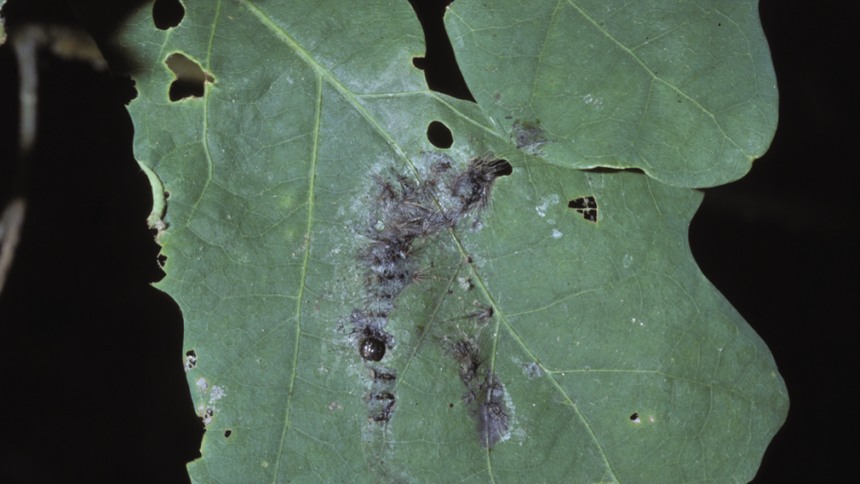The level of pathogen genetic variation within hosts impacts health both at the individual and population level. Of particular concern are severe disease symptoms and high pathogen transmission rates due to high pathogen genetic diversity. Despite the important role of pathogen genetic diversity in clinical and epidemiological contexts, the main factors determining genetic diversity have not been assessed comprehensively across multiple scales. In order to overcome the numerous simplifying assumptions in current genetic models, CIDD researcher David Kennedy, along with Greg Dwyer from the University of Chicago, developed a mechanistic mathematical model that utilizes epidemiological data to explain pathogen genetic diversity.
Kennedy and Dwyer primarily focus on how the process of genetic drift impacts pathogen genetic diversity. Genetic drift is a change in an allele's frequency due to the chance events and thus it can have drastic effects in small populations; drift may therefore alter pathogen diversity during bottlenecks at transmission and during the replication within hosts that follows these transmission events. Kennedy and Dwyer use a nested model framework that allows for population processes to occur both within hosts and at larger population scales. They parameterize their model using the gypsy moth baculovirus, Lymantria dispar multiple nucleopolyhedrovirus. The gypsy moth baculovirus exhibits dynamics at different scales – within hosts, within epizootics, and between years – which allowed Kennedy and Dwyer to concurrently explore many measures of pathogen genetic variation.
Using whole-genome sequencing, they determined that a large fraction of nucleotide diversity within hosts could be explained using just 0.4% of the genome, and between hosts, nucleotide diversity at these sites varied markedly. These results suggest pathogen diversity is largely determined by exposure to multiple virus strains, and not de novo mutation. Genetic drift is a plausible explanation for the observed patterns in genetic diversity, but only if it is incorporated across multiple scales of biological organization: within hosts and during transmission bottlenecks. The nested model showed that drift can act within and between hosts and at timescales from hours to decades. To test the model explicitly, they used it to predict the expected distribution of nucleotide diversity across hosts and compared it to the observed sequence data; it matched the data well. They also created alternative models that simplified drift and that added purifying selection, none of which recreated the observed data patterns.
These results supported that genetic drift is a critical factor in determining and predicting genetic diversity in pathogen populations at the host and population levels. These findings regarding the importance of drift may be applied to improving human health. For example, strong genetic drift can interfere with selection, and so the evolution of drug resistance might be slowed if interventions were timed to coincide with periods of strong drift.
Synopsis written by Ellen Brandell
Image Caption: A gypsy moth caterpillar killed by its obligately lethal baculovirus. Gypsy moth caterpillars become exposed to virus when they consume foliage contaminated with virus. The virus replicates to population sizes on the order of 10^9 and then produces proteases and cathepsins that melt the host from the inside out, releasing virus onto foliage thus perpetuating onward transmission. (Photo credit: Alison F. Hunter)
Publication Details
David Kennedy, Greg Dwyer
Effects of multiple sources of genetic drift on pathogen variation within hosts
Journal: PLOS Biology
PLoS Biol 16(3): e2004444.
DOI Reference




